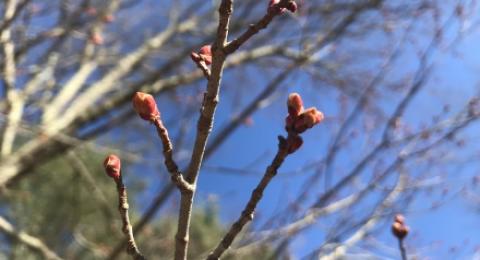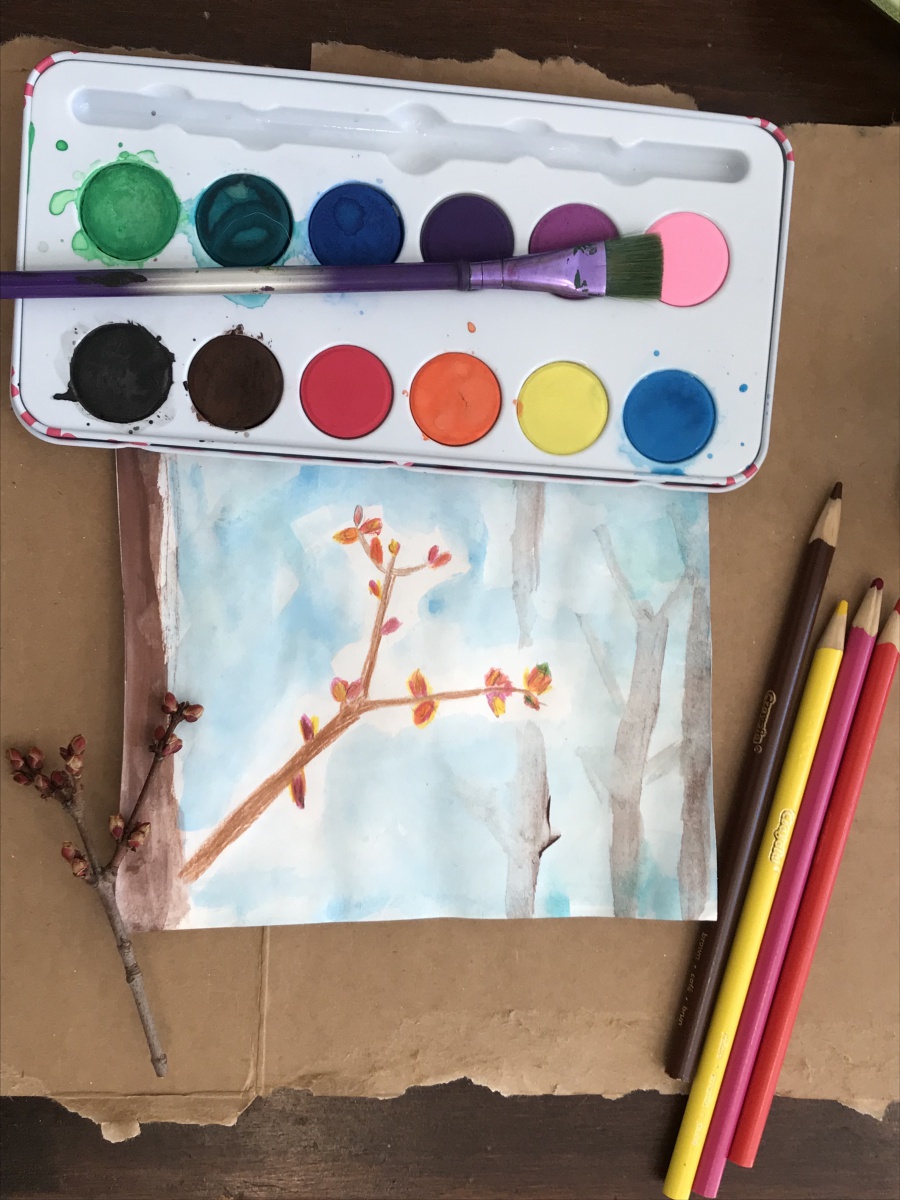
Be a Backyard Scientist & Track the Greening of Your Own Backyard
Ever wonder when leaves will return in the spring? Ever notice which plants grow new leaves first? Be a backyard scientist and track the greening of your backyard this spring.
MATERIALS:
- Notepad
- Pencil
- Marker (preferably permanent ink)
- Colored pencils or crayons
- Ruler
- At least one woody plant to observe
- Optional: Internet access for sharing observations with other
SAFETY NOTE: During the COVID-19 public health crisis, make sure the outdoor plants used for this activity are in a location that maintains CDC’s social distancing recommendations.
Students Grades 3rd-5th (with appropriate modifications)
Next Generation Science Standards (NGSS)
Disciplinary Core Idea--Life Science (LS1-1) Plants and animals have both internal and external structures that serve various functions in growth, survival, behavior, and reproduction.
NGSS Science Practices (SP)
- SP1: Asking questions
- SP4: Analyzing and interpreting data
- SP6: Constructing explanations
- SP8: Obtaining, evaluating, and communicating information
SET-UP (Adapted from GLOBE’s Green-up Protocol (https://www.globe.gov/ )):
- Select one or two woody plants, preferably trees or large shrubs (e.g., lilac), near your home and in an area that is safe for observation.
- For each tree or shrub, identify four buds on a single branch (start from the end of the branch) to focus your observations. To keep track of each bud, mark the branch next to each bud using a permanent marker. Numbering can be done by using dots.
- Make a data chart to record your findings in your science notebook. Keep track of the date, bud color, bud size changes (such as swelling), first signs of a green leaf (known as budburst) and the changing size of the first leaves.
- Using your notebook, create your own method for documenting the date and changes to the buds over the spring months or use the example data table provided. (For younger learners, you may also use a modified data sheet.)
RECORD OBSERVATIONS AND MEASUREMENTS (several weeks):
- Optional: Take photographs of the buds to upload to iNaturalist so that plant enthusiasts can help you accurately identify the species. iNaturalist is a free online platform to share plant and wildlife sightings.
- Observe each bud twice a week and write down in your data chart the stage of growth of your buds with words and add a detailed sketch per tree. Feel free to focus on a single plant. When you see the bud swelling, observe daily so you see the first green leaves, also known as budburst. Continue to observe and measure the first leaves until they stop growing.
Pay special attention to:
-
Color and shape of the buds
-
Bud growth, especially dormant (unchanged) vs swelling
-
Evidence of a first green leaf showing (budburst)
-
Each green leaf’s changing size (mm)
-
Your questions
SHARE EXPLANATIONS:
- Review and use your completed observations and measurements to explain:
- When did leaves return in your backyard? What’s your evidence?
- If you compared two different plants in your backyard, which plant grew new leaves first? Which plant took longer to produce four full-sized leaves?
- What new questions do you have now?
- Share your sketches, measurements, ideas and questions with others.
- To share with classmates, ask your teacher for an appropriate opportunity.
- To share with citizen scientists and others in your community, use iNaturalist (free and open to the public).
ASK THE BIG ‘WHY’ QUESTION:
- Using your prior knowledge and resources available to you, consider the following question: Why are leaves important to the plant’s growth and survival?
- Optional: Read How Does a Plant Grow? By L. Lowery (electronic book available at https://common.nsta.org/resource/?id=10.2505/PKEB330X3 )
- Share your explanation for why leaves are important to the function of the plant with your classmates and family.

Click here for downloadable .pdf of activity
Further Exploration:
- Take a photograph or small sample to draw or paint a detailed image of the tree buds (see photo of an example for the Red Maple buds; watercolor by 3rd grader)
- K-4 Elementary GLOBE activities on Seasons: https://www.globe.gov/web/elementary-globe/overview/seasons
- GLOBE’s Guide to the Green-Up Protocol (scroll down for specific learning activities)